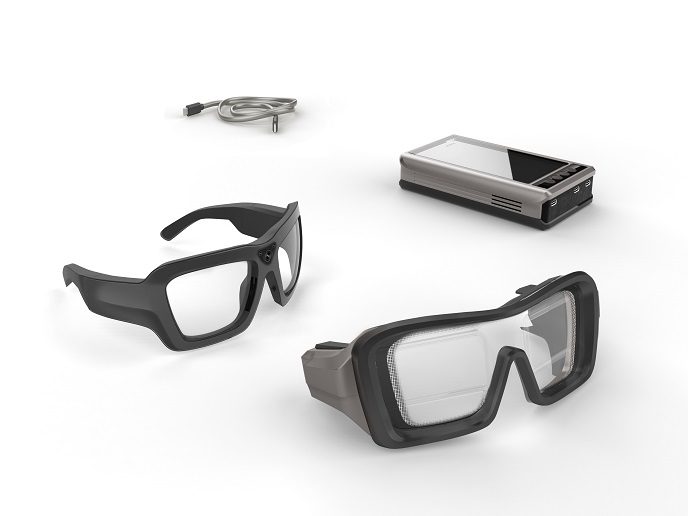Radical glasses blend eye tracking with augmented and mixed reality display features
The impact of augmented and mixed reality technologies is still fairly limited because of one common flaw: they don’t react to natural human gaze behaviour. Eye tracking (ET) technology can bridge the gap between humans and technology, providing complete bidirectional communication with the environment and leading to much smarter user interactions.
Immersing users into a complete digital loop
“Seamlessly connecting humans into the digital loop via smart wearables is a global challenge that will transform the market,” says Frank Linsenmaier, coordinator of the EU-funded Digital Iris project. Market interest in making biometric data accessible for wearable technologies is extremely high. “This disruptive leap forward would occur once a robust, reliable and certified head-wearable system became available.” The Digital Iris project team at Vienna-based Viewpointsystem developed the mobile Eye Hyper Tracking (EHT) system consisting of sophisticated smart glasses with eye camera sensors for eye movement recognition and a front camera for visual field observation and recognition. The glasses are connected to a portable minicomputer that records, compresses and stores data, allowing video live streaming to laptops and tablets where a software solution exploits the data’s full potential. They are extremely lightweight, can be worn for hours and work in nearly all lighting conditions. While other systems require the wearer to constantly shift their eyes by jumping back and forth between digital information and real life, the glasses display information in the line of sight where it can easily be processed.
Intuitive human-machine interface
The technology combines ET and mixed reality to recognise the need for information via the interface of the eyes and to constantly provide the right information in front of the eyes. The system is modular; the very precise ET glasses can be extended with a mixed reality click-on placed in front of the glasses. “Based on eye movements and pupil reactions, human needs and sensations, orientation in space, and also stress and fatigue become digitally recognisable,” explains Linsenmaier. In addition, users can interact with the elements displayed by simply using their eyes instead of hands or voice. Eye gestures and hands-free operation make the system highly practical for all professional applications, especially those in manufacturing, security, mobility and transport, retail and logistics. Customers can improve the quality of work, share newly acquired knowledge and reduce costs. “The solution will be a game changer for the workplace,” continues Linsenmaier. The system’s robustness is a key factor in ensuring that the wearer gets the best possible user experience under realistic situations like changing light conditions. “According to customers, lack of robustness is the main weakness of competing products,” adds Linsenmaier. “Our glasses have the same user-friendliness as normal glasses, the wearer feels completely comfortable with the system.” At the 2019 CES Innovation Awards, the VPS 19, the first smart glasses prototype incorporating the technology, was an Honoree under the wearable technologies category. The product will soon go into volume production and be market-ready during 2020. Project partners are targeting the European and North American markets. “Digital Iris is the first wearable technology combining ET with an extended reality display element,” concludes Linsenmaier.
Keywords
Digital Iris, eye, glasses, wearable, mixed reality, HT, eye tracking, Hyper Tracking, VPS 19







